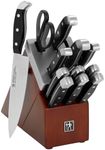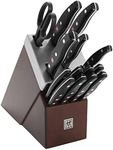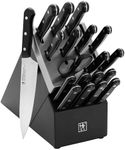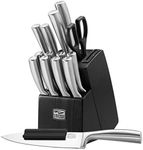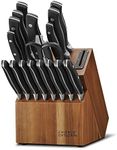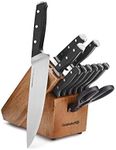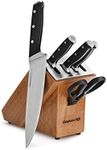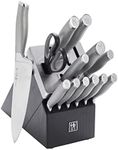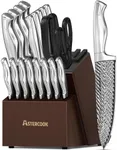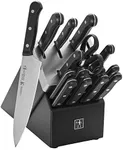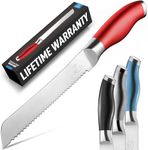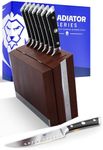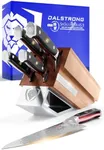Buying Guide for the Best Self Sharpening Knives
Choosing the right self-sharpening knife can make a significant difference in your kitchen experience. These knives are designed to maintain their sharpness over time, reducing the need for frequent manual sharpening. When selecting a self-sharpening knife, it's important to consider several key specifications to ensure you get the best fit for your needs. Here are the main factors to consider and how to navigate them.Blade MaterialThe blade material is crucial because it affects the knife's durability, sharpness, and ease of maintenance. Common materials include stainless steel, high-carbon stainless steel, and ceramic. Stainless steel is resistant to rust and easy to maintain, making it a good all-around choice. High-carbon stainless steel is harder and holds an edge longer but may require more care to prevent rust. Ceramic blades are extremely sharp and lightweight but can be brittle. Choose a material based on your cooking habits and willingness to maintain the knife.
Handle MaterialThe handle material impacts the knife's comfort and grip. Common materials include wood, plastic, and composite. Wooden handles offer a traditional look and feel but may require more maintenance to prevent cracking. Plastic handles are durable and easy to clean but may not provide the best grip when wet. Composite handles combine the best of both worlds, offering durability and a good grip. Consider how the knife feels in your hand and how much maintenance you're willing to perform.
Self-Sharpening MechanismThe self-sharpening mechanism is what sets these knives apart. Some knives have built-in sharpeners in the storage block, while others have mechanisms integrated into the knife itself. Block sharpeners are convenient and ensure the knife is sharpened every time it's stored. Integrated sharpeners may require less effort but can be less effective over time. Think about how often you use your knives and how much convenience matters to you.
Blade LengthBlade length affects the knife's versatility and ease of use. Common lengths range from 6 to 10 inches. Shorter blades (6-8 inches) are easier to control and are ideal for tasks like chopping vegetables or slicing smaller items. Longer blades (8-10 inches) are better for slicing larger items like meat or bread. Consider the types of food you prepare most often and choose a blade length that matches those tasks.
Weight and BalanceThe weight and balance of a knife affect how comfortable it is to use. A well-balanced knife feels stable and reduces hand fatigue during extended use. Heavier knives can provide more cutting power but may be tiring to use for long periods. Lighter knives are easier to handle but may require more effort to cut through tough items. Test the knife in your hand if possible to see how it feels and choose one that offers a good balance for your strength and cooking style.

